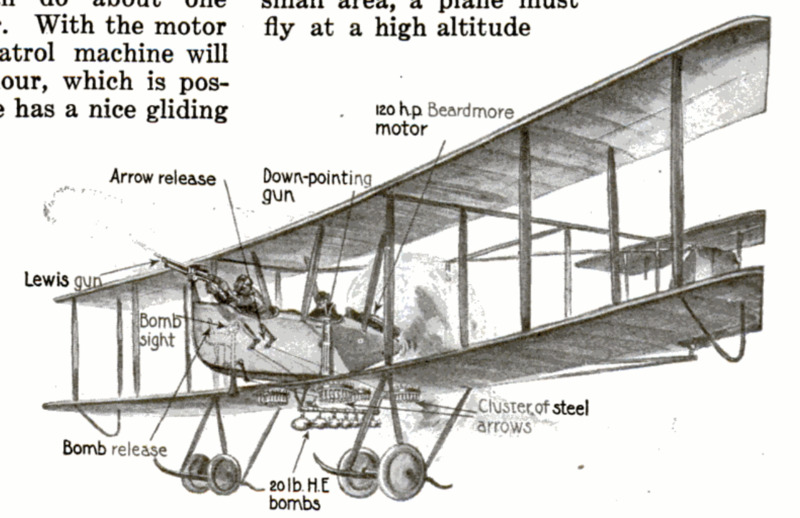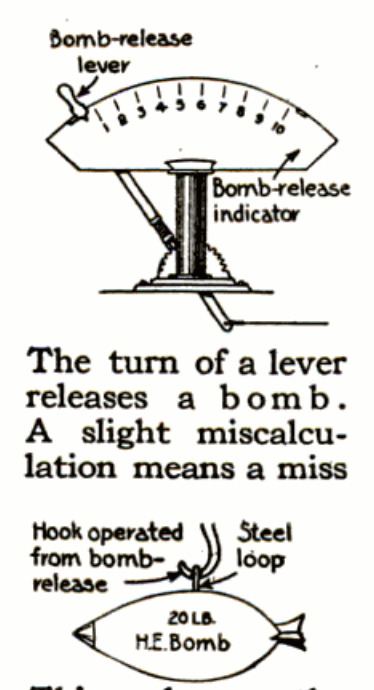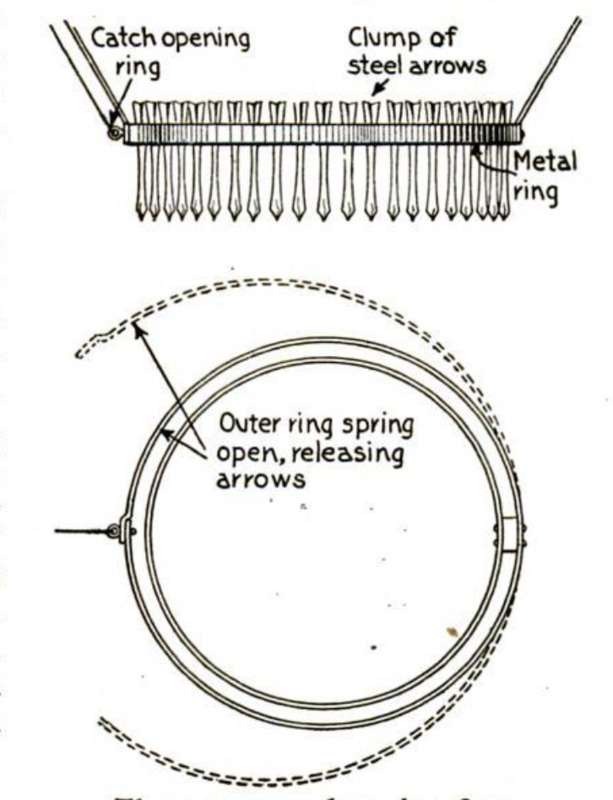Contact airplane
Item
-
Title (Dublin Core)
-
Contact airplane
-
Article Title and/or Image Caption (Dublin Core)
-
The Hawks of the Royal Flying Corps. What contact patrol means in the fierce fighting on the western front
-
extracted text (Extract Text)
-
CONTACT PATROL—"A flight of
one or more planes over the lines
to give General Headquarters in-
formation regarding the position of Allied
and German troops and also to take of-
fensive action against enemy troops on
the ground.”
The average reader who sees this
definition probably concludes
that contact patrol is as unin-
teresting as it sounds. Defini-
tions are never as thrilling as
the things they define. Any fine
morning on the sector of the
western front held by the British
you will find back of the lines
at the Royal Flying Corps’ air-
dromes, squadrons of planes
preparing for contact patrol
work. The airplanes used are
generally of the same type (the
F.E.2.B. “Pusher”), two seaters
with one hundred and twenty
horsepower Beardmore engines.
‘While not particularly fast, these
planes are easy to handle. Be-
cause their work is done mostly
at a low altitude, they are slow climbers.
It takes them about twenty-five minutes
to climb ten thousand feet, but in straight-
away flight they can do about one
hundred miles an hour. With the motor
throttled a contact patrol machine will
glide sixty miles an hour, which is pos-
sible because the plane has a nice gliding
angle. The armament
consists of one down-
pointing Vickers ma-
chine-gun, fixed along-
side the fuselage or
body and operated by
the pilot, and one
Lewis machine-gun
operated by the ob-
server. This Lewis’
gun can fire up or
down and also
straight ahead. The
motor is in the rear,
so that it cannot in-
terfere with the firing
All these missiles of death are released
from the observer's cockpit by a
bomb-firing trigger attached to
a bomb-sight. This bomb-sight
is not used on contact patrol, as
the airplane has to spend con-
siderable time over an objective
before it can be used. At a given
height there is only one point
of space where the airplane must
be, if the bomb is to hit its ob
jective. A miscalculation, no
matter how slight, means a miss.
‘When this happens, the aviator
must turn his plane around and
try once more to make the
imaginary path of his machine
pass exactly through the proper
point. These repeated tricks
are made for half an hour. The
aviator must maneuver at will, unham-
pered by other planes. It is obvious that
when the bomb-sight is used over a
small area, a plane must
fly at a high altitude
and alone. On contact patrol, planes
fly very low and have done such effect-
ive work particularly with their ma-
chine-gun fire, that the Germans have
found it necessary to dig bullet-proof
trenches alongside the roads on which
their troops march. At
the alarm, the regiments
dive for these trenches
where they are com-
paratively safe.
Generally five planes
are assigned to a con-
tact patrol squadron.
They fly in the usual
V-shape formation.
Once over the lines,
their work commences.
They remind one of
hawks hovering over a
chicken yard. Eagerly
the pilots and observers
scan the ground below,
undaunted by the hail
of lead poured up at them
from machine-guns and
“Archies.”
What's That ? A Regi-
ment of Germans?
‘What the observers
in the machine want to see most Is a
train or railroad or road-bridge. As soon
as they see one, down they swoop. One
after the other lets go a load of bombs and
climbs again. The observers note the
damage, etc. Suppose they see a regi-
ment marching rapidly towards the front.
In a fast glide, they descend almost on
top of the startled soldiers. The machine-
gunsmow the Germansdown, and often one
plane of the squadron, flying higher than
the rest, releases several
clumps of the steel arrows.
If there are
no safety tren-
ches at the
side of the
road, it is pos-
sible that al-
most the whole
regiment may
be wiped out.
Should there
be trenches,
no doubt
machine-guns
will be hidden in them with the result that
perhaps one or more planes of the squad-
ron will be brought down by their fire.
Hostile ammunition and gasoline depots,
headquarters, railway junctions, detrain-
ing stations and aircraft hangars are
all objectives for the
pilots of a contact pa-
trol squadron. It may
be that there is a de-
tachment of enemy en~
gineers busily engaged
in preparing the site
for a new battery or
building a bridge. If
seen, rest assured that
the planes will give them
a warm reception.
-
Language (Dublin Core)
-
eng
-
Date Issued (Dublin Core)
-
1918-06
-
pages (Bibliographic Ontology)
-
860-861
-
Rights (Dublin Core)
-
Public Domain (Google digitized)
-
Archived by (Dublin Core)
-
Filippo Valle
-
Alberto Bordignon (Supervisor)
 Popular Science Monthly, v. 92, n. 6, 1918
Popular Science Monthly, v. 92, n. 6, 1918







